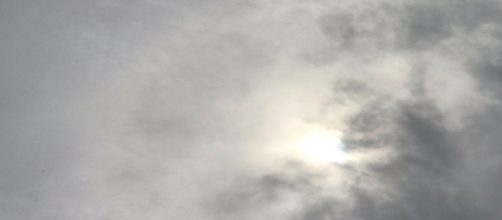The first Solar Eclipse to sweep the U.S. country side since 1918 occurred on Monday the 21st and in the state of Illinois, it was a must-see event. Southern Illinois, specifically Carbondale was the destination to be to get the best view of the astronomical phenomenon. The 15,000 seat stadium in Carbondale that is home to Southern Illinois University's athletic program was completely sold out for viewing the eclipse as thousands of other migrated their way to the surrounding area. The reason for this location is that this was the location where 100% of the sun would be covered up by the moon.
Even though the sun was not set to be 100% covered in Chicago and its surrounding suburbs, a rough 87% of it was projected to be. While the weather was clear in Carbondale, a few days earlier the forecast said that there was a chance of overcast skies and possible storms in Chicago. Luckily for Carbondale the skies were clear and the people there saw the sun covered up in totality for two minutes and 38 seconds which sent to town into night-like darkness. As for Chicago, the sky featured an overcast sky which gave a lot trouble seeing the crescent sun to spectators.
Detailed account of Chicago-land eclipse
The eclipse was said to take its full effect at 1:19 CDT, and there was definitely some visible signs of it in the Chicago Land Area despite tough visibility of the sun and moon themselves.
The cloud cover made seeing it very difficult and often the faint light of the sun seen through the clouds was all that could be seen which was not enough to make out the sun disappearing behind the moon even with glasses. Still the lighting outside was noticeably a few shades darker than it normally would be during the cloud cover.
The clouds were not very consistent and there were times when a break or two in the overcast sky made the sun and the shadows of the moon visible, but it did not last very long as the clouds moved at a steady pace. Even if there were no glasses to use it was still not really possible to see shadows through the trees because of the clouds, only when there was the slight breaks that lasted a few seconds at a time.
The sky was shades darker from just the afternoon until it was around the 2:00 CTD hour and both the light from the sun was brighter and there were a few more breaks in the overcast skies. It was tough knowing how rare the opportunity was to see a solar eclipse and having cloud cover, but there was plenty of live-coverage of the event on television.
Other events and reactions
Parties continued around the state regardless of the weather which also included Chicago's Alder Planetarium hosting a big party during the eclipse and other towns had their own viewing festivals. The events with the Planetarium still brought in a lot of people despite the cloud cover.
Thousands view eclipse through the clouds at @AdlerPlanet Eclipse Fest https://t.co/ZeNMQkwla6 pic.twitter.com/Ji6g0BFLnM
— Chicago Sun-Times (@Suntimes) August 21, 2017
A reaction that is going viral on the internet is Chicago's WGN Channel 9 weatherman Tom Skilling getting emotional live on TV during the eclipse.
Skilling was broadcasting live in Carbondale with a bunch of locals also watching the eclipse and as it took full effect he started to tear up and his voiced cracked in awe of what he saw in the sky. The city of Chicago may had had clouds block the view of the eclipse for many, but Skilling's reaction to it will be remembered by a lot of people in the city.
TEARS OF JOY: Tom Skilling got a little emotional during his cover of the eclipse. We feel you, Tom. @Skilling #SolarEclipse2017 pic.twitter.com/T18DvLw1SG
— WGN TV News (@WGNNews) August 21, 2017


